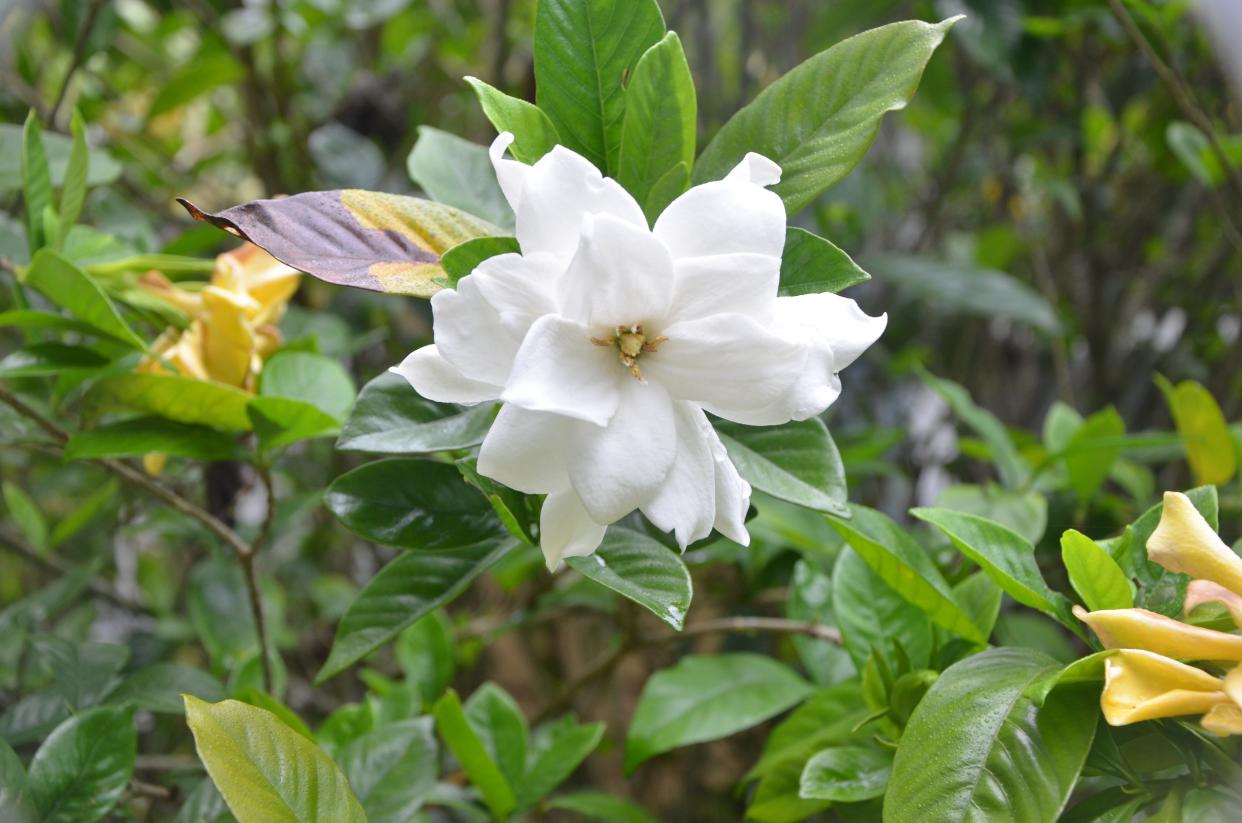When to prune? Snip gardenias after fragrant blooms end in early summer

As stated in an earlier column, pruning plants in the home landscape depends on the species of plant not the season of the year for the best outcome. Some shrubs and trees start the spring with the growth of new branches which will produce blooms in late spring or summer.
Some flowering shrubs bloom only on new wood which grew earlier in the growing season. Pruning in the fall and winter does not remove flowering wood with buds.
Pruning also may be done in the very early spring before new growth occurs. This practice does not result in loss of blossoms.
Summer gardening: Enjoy the flowers: What to do in the garden in May and June
Mystery Plant: Pinkshell azalea has spectacular flowers, is easy to grow | Mystery Plant
Pruning tips: Avoid pruning pitfalls with tips to encourage healthy blooms on flowering shrubs
Hibiscus (Hibiscus rosa-sinensis), Crape Myrtle (Lagerstroemia indica), Roses (Rosa sp.) and Buddleia (Buddleia davidii) are examples of locally popular flowering plants that produces flowers on the current season’s growth.
Summer flowering plants also are pruned by thinning or for rejuvenation in the early spring before growth starts. Removing older canes of flowering shrubs allows better sunlight penetration into the shrub.
If done correctly, this will result in stronger growth and better flowering throughout the shrub. If left unpruned, the flowers likely will appear only at the outer surface of the plant where sunlight is sufficient.
Pruning for fruit is similar to pruning for flowering. Most plants which are grown for their fruit fall into the category of spring flowering plants.
That means that the flowers which develop into fruit were formed the previous summer or winter.
Most fruiting plants are pruned in early spring, February to March in north Florida. Doing so mean there is the potential for removal of some undeveloped fruit.
However, most fruiting plants produce many more flowers than needed to produce the number of fruit the plant can reasonably support structurally. Too many fruit can overstress branches which results in breakage, especially with young trees.
Most fruit trees are pruned to encourage new growth. This also helps to keep plants short and stocky, resulting in easier harvesting potential.
Strong branches allow the tree to bear a fruit load without breaking as the tree matures. Most small fruit plants, such as grapes and blueberries which produce fruit on new growth, should be pruned annually.
Remove suckers, water sprouts and most competing branches growing straight up through the tree. These shoots will not produce fruit and use much of the tree’s resources in an unproductive way.
If a grafted fruit tree, like most citrus is today, remove any shoots which appear below the graft. These rootstock suckers will produce only bitter fruit typical of its parent variety
Make pruning cuts so the plants growth is directed outward. This practice enhances the structural soundness of the fruit tree, provides better sun exposure and airflow through the branches.
Reduce the number of fruit on a branch to increase fruit size. The tree’s finite resources will be channeled to the remaining fruit.
Beyond these little tips, each tree or shrub has its unique pruning needs. Understanding what each species needs is the key to successful pruning and fruit production.
Lastly, sharpen pruning tools. Dull cutting tools will result in jagged cuts and may permanently damage the tree.
To read more stories about living in panhandle Florida visit Outdoorauthor.com and follow Les Harrison on Facebook.
Ed Duke, PhD (Associate Professor in the FAMU College of Agriculture and Food Sciences), Sam Hand, FAMU Extension (Associate Professor and Director of Industry Credentialing Training Programs, FAMU Cooperative Extension) and Les Harrison (UF IFAS Extension Agent Emeritus).
Never miss a story: Subscribe to the Tallahassee Democrat using the link at the top of the page.
This article originally appeared on Tallahassee Democrat: When to prune? It depends on the species not the season

